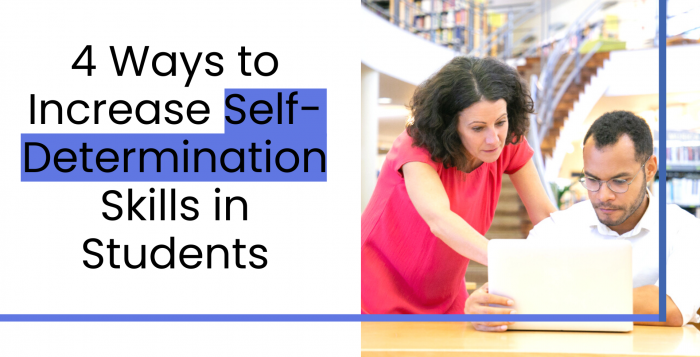4 Ways to Increase Self Determination Skills in Students
Self-determination skills are essential to helping students thrive in school, friendships, relationships, employment and community living.
To increase these skills, teachers need to teach kids problem-solving, decision making, goal setting and self-advocacy.
Teaching them to solve problems themselves will give them the confidence to stand up for themselves when they need to and take risks in their lives.
1. Encourage them to take risks
Risk taking involves trying new things. It’s an important part of learning and development in children.
It can help them build confidence and skills. It can also help them and it can help you too & get professional management assignment help learn to be resilient if something goes wrong.
However, not every child will want to take risks. This is why it is vital to encourage children to do so in a safe environment.
The first thing you should do is talk to your child about the different risks they are taking in their daily lives. Explain to them that some risks are safe, while others can be hazardous.
You can also encourage them to try activities that involve a little bit of risk such as walking to school or the park alone. It’s a great way to increase their activity level while getting them out of the house and out of their comfort zone.
You can also try playing activities where you disappear, such as enclosing yourself in a cubby built of sheets or hiding in the bushes. This will allow your child to feel they are not being watched, even if you are nearby.
2. Involve them in leadership activities
Involving students in leadership activities is a great way to help them build self-determination skills. It’s important to find opportunities to practice these skills throughout school, from putting them in charge of their own lessons and assignments to allowing them to lead a group of peers at a student meeting.
Students need frequent practice with these skills to ensure they can be successful in life after graduation. This includes setting goals, creating a plan to achieve them and monitoring progress toward them.
This activity also helps students get regular feedback on their performance, something that’s crucial to becoming a successful leader.
This is a fun and easy way to help students learn how to set goals, make plans and monitor progress toward them. It’s a great way to encourage students to take risks, and it can even lead to them becoming leaders within their clubs or organizations.
3. Appreciate their efforts
Self-determination is the ability to take charge of one’s life and be an active participant in it. This entails taking advantage of opportunities, making informed decisions and choices, and managing emotions while exercising a healthy degree of autonomy. It is a critical skill for anyone to master, but it is especially important for individuals with disabilities as they progress from childhood to adulthood.
To promote self-determination in students, educators can turn to a variety of tools and technologies that help promote this key component of the human experience. These include the following: a) tools and technologies that support student learning and b) technologies and strategies that enhance student engagement in classroom and extracurricular activities. The best way to achieve this is to develop a plan that provides students with the right mix of resources and supports for their needs and learning styles. For example, an individualized education program (IEP) that includes an ISP or Individualized Student Plan with an IEP team comprised of parents, teachers and other relevant stakeholders should be considered the gold standard.
4. Encourage them to set goals
Goal-setting is a powerful way to encourage self-determination skills in students. Help them to set realistic, relevant goals that are time-limited and trackable.
For example, a student may articulate the goal of raising their grades from a D to a B. Then, ask them to dig deeper and figure out what is getting in their way.
Once they identify those obstacles, you can help them come up with a plan to circumvent them. For example, if a student’s low grade is due to a lack of homework, you might suggest they set a goal of doing 10 pages per night for a week.
Next, encourage them to keep a weekly goal summary. At the end of the week, have them reflect on how they’ve progressed toward their goal and if they want to make changes. This helps them stay focused on their goal and keeps them motivated to keep working towards it.



